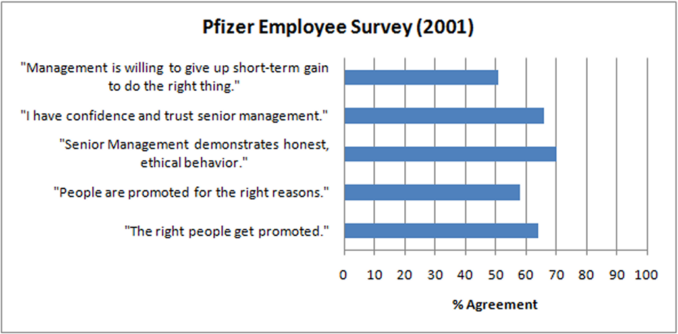
First though, I hope this was anonymous.
(Wikimedia Commons)
UN Phone Survey
Last month, a world-wide telephone survey was conducted by the UN.
The only question asked was:
“Would you please give your honest opinion about possible solutions to the food shortage in the rest of the world?”
The survey was a complete failure because:
In Eastern Europe they didn’t know what “honest” meant.
In Western Europe they didn’t know what “shortage” meant.
In Africa they didn’t know what “food” meant.
In China they didn’t know what “opinion” meant.
In the Middle East they didn’t know what “solution” meant.
In South America they didn’t know what “please” meant.
In the USA they didn’t know what “the rest of the world” meant.
And in Australia, New Zealand and Great Britain everyone hung up as soon as they heard the Indian accent.
We are bombarded via the MSM with masses of information about nutrition and health, some good, but much of it poor and unsubstantiated. All too often there is no indication as to how the information was obtained, especially when it is being presented by a journalist with little or no scientific experience. Thus the Sunday Supplement latest fad diet is believed by those that read it to be the cure for all the readers ills and weight worries, until the next one comes along.
There are numerous ways of weighting and interpreting the outcomes of nutritional surveys and studies, and these can often be extrapolated to the general use of surveys elsewhere. What is needed is the knowledge to recognise the different study or survey designs and their main strengths and weaknesses. Not all results carry the same amount of weight, not just science results but also the results of political surveys. The old adage that a survey isn’t carried out to inform but to influence public opinion has never been more true than today. Biased questions produce biased answers which is just what those paying for the survey want, add to that the Polling company’s ability to choose who it asks without recourse to indicating any other information about the persons questioned and you end up with something about as believable as the earth is flat. Eratosthenes proved that incorrect over 2000 years ago, and Polling companies are still trying to prove him wrong. Perhaps the stupidest survey results come from the cosmetic industry, “87% of those who used our product said it improved their skin,” and in very small type almost hidden on the page or screen, total number surveyed 50, I’d love to meet that 0.5 of a person. Worse than useless but millions of (usually) women still buy the product.
I’ll use survey from now on rather than study. They’re more or less the same.
They can be separated under two main headings, Experimental and Observational.
Experimental surveys are the most powerful, with their key feature being Intervention. Usually there are two groups of data, one group is given under control a treatment, the other a placebo, data is then collected and comparisons made. The disadvantages of such surveys is that they take time, involve a large number of participants, and are expensive. Individuals are tested at the beginning and the end of the survey, for example BP, Cholesterol, weight, plus mental and physical tests. One is looking for Change, ie Causality. Such surveys can establish whether a particular dietary treatment causes a change in certain parameters, for example Fish oil does lower plasma triglyceride levels (this is a good thing.)
Observational surveys, of which there are several types can be cheap, cheerful and very often wrong, or with proper controls in place can produce good results, you get what you pay for though. As an example, is there a relationship between diet and health? We all know there is, but just how do you go about proving it? You are surveying people in their natural context, which is immediately suspect, because people lie (especially those who are obese,) and this leads to big errors in data. The simplest system is a Food Frequency Questionnaire, “How often do you eat certain foods (or how many units of alcohol do you have each day,) and in what amounts?
If you hand out enough questionnaires then maybe you’ll end up with useful data that you can calculate fat, carbohydrate, protein, vitamins and minerals from. It is an efficient and cheap way to get data however the disadvantages are obvious.
Another method is called an Ecological Survey where the unit of measurement isn’t an individual but a group, or even a country, useful to look at broad differences but all too often people try to extrapolate results to the individual.
Cross-Sectional Surveys look at a group of individuals at one single moment, for example exposure to a substance and the subsequent outcome. How does Blood Glucose level change after you have drunk a beer, or how does obesity impact on blood pressure when exercising on a treadmill? The problem is a bit chicken and egg, just which came first, we are unable to assign the temporal relationship between exposure and outcome, and this is a big limitation. This type of survey is popular because it is cheap, but the results need to be treated with caution, it is a bit confounding.
Case-Control Surveys look back in time at a patient’s case and compare it with a control person, for example compare their past diet history, look at their dietary intake and see if there is any link that can be identified. It can be helpful particularly to study rare diseases over time. Is there a link between diet and Cancer perhaps? However, disadvantages of biased results are a problem, unless care is taken to ensure the control group has a similar background.
It is also confounding, as an example, “meat eaters are generally heavier” (no they are not.) Obesity is a risk factor in Colon Cancer, meat isn’t bad, obesity is, so BMI (or whatever measure is used) is a Confounder. The only conclusion that can be drawn from that is that higher meat intake is associated with or is correlated with a higher risk of Colon Cancer.
You cannot say, eating meat gives you Colon Cancer.
The “Gold Standard” Observational survey is a Cohort one. It is the most powerful, mainly because no cause and effect in involved. It’s also the most expensive because it can last for years and involves very large numbers of people.
A very large group of individuals are studied for years after having their baseline food intake assessed. One looks at the rate at which they become ill and develop certain diseases. Every couple of years or so the participants are invited to do a food questionnaire, with the information being linked to the rate at which people become ill. As with all questionnaires there is an accuracy problem but this is mitigated by the huge number of participants. This is where “5 a day” comes from, as well as “eat more fibre.”
The most famous of these surveys was started in the USA in 1976 and is ongoing, called the Nurses’ Health Studies it was started by Frank Speizer, M.D. with 121,700 married women, aged between 30 to 55. Two further surveys have commenced in the interim. See here for details of it Nurses’ Health Studies
Another started approximately 15 years ago is the European Prospective Investigation into Cancer (EPIC) which involves half a million people in 10 countries. EPIC study
A bit of a boring subject to some people but it ties in to Nutritional Health, more of that at a later date. I’ll leave you with these:
In a recent survey, people from Detroit have proved to be the most likely to have had sex in the shower. In the survey, carried out for a leading toiletries outfit, 86% of Detroit residents said that they have had, if not enjoyed, sex in the shower. The other 14% said they haven’t yet served any time in prison.
Just be careful when reading survey results, remember that 1 in 4 Americans in a survey of 2200 believed the Sun goes round the Earth, while 11% thought HTML was a sexually transmitted disease.
© FJ 2021
The Goodnight Vienna Audio file
Audio Player



